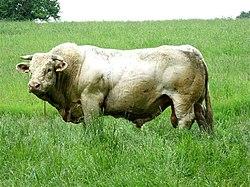A bull described as “dangerous” was shot and killed by police after it escaped from a meat processing plant on the Isle of Man. Authorities responded to reports of the animal on the loose, prioritizing public safety amid efforts to contain the situation. The incident has raised concerns about animal handling protocols and safety measures at the facility, prompting an official review.
Dangerous Bull Escapes Meat Plant Prompting Urgent Police Response
Authorities were forced to take decisive action after a bull broke free from a meat processing facility on the Isle of Man, sparking a swift and intense response from local police. The animal, described as “dangerous,” evaded capture for over an hour, causing significant concern as it roamed through nearby residential areas. Officers evacuated a number of streets and implemented road closures to ensure public safety while tracking the bull’s unpredictable movements through the community.
Key details of the incident include:
- The escape occurred late afternoon, impacting several nearby neighborhoods.
- Emergency services coordinated closely to minimize risk to residents and property.
- After repeated attempts to tranquilize, police made the difficult decision to use lethal force.
- No civilian injuries were reported, though some minor damage to vehicles and fences was noted.
| Event Timeline | Details |
|---|---|
| Time of Escape | 4:35 PM |
| Area Impacted | Douglas Suburbs |
| Police Arrival | 4:45 PM |
| Time of Incident Resolution | 6:00 PM |
Authorities Detail Risks Posed by Escaped Livestock in Urban Areas
Authorities have emphasized the serious dangers that escaped livestock can pose when roaming urban environments. Aside from the immediate risk to public safety, there is considerable potential for traffic accidents, property damage, and disruptions to local services. Police and animal control officers must often act swiftly to contain or neutralize threats, especially when dealing with large animals like bulls that can become unpredictable and aggressive under stress.
Key concerns highlighted by officials include:
- Public safety hazards: Escaped animals can charge at pedestrians or motorists, causing injuries or fatalities.
- Traffic disruption: Livestock on roads leads to accidents, road closures, and significant delays.
- Damage to property: Urban settings are not equipped to contain large animals, resulting in broken fences, damaged vehicles, and destroyed landscaping.
- Stress to animals: The unfamiliar urban environment increases the risk of erratic behavior, making capture difficult and dangerous.
| Risk Category | Impact | Mitigation Effort |
|---|---|---|
| Public Safety | High – Injuries and fatalities possible | Rapid police intervention, using tranquilizers or, if necessary, lethal force |
| Traffic Disruption | Moderate – Road closures and accidents | Traffic rerouting and animal containment units deployed |
| Property Damage | Low to Moderate – Fences, vehicles | Secured holding pens and improved farm-to-city livestock transport protocols |
Recommendations for Enhanced Security Measures at Animal Processing Facilities
Following the recent incident involving a bull fleeing a meat processing plant on the Isle of Man, it has become evident that current security protocols require significant enhancement. To prevent similar breaches, facilities must adopt multi-layered containment strategies, including reinforced fencing integrated with motion sensors and CCTV monitoring. Additionally, staff training on animal behavior and emergency response should be prioritized to ensure quick, safe interventions in case of escapes.
Furthermore, implementing technological innovations can play a crucial role in bolstering security. Electric barriers, GPS tracking collars on livestock, and real-time alert systems can provide early warnings before animals reach populated areas. Below is a consolidated summary of recommended measures designed to minimize risk and protect both animals and the public:
- Physical Barriers: High-strength fencing with double gates
- Surveillance Systems: Continuous video and motion detection
- Animal Monitoring: GPS tracking devices for real-time location
- Staff Training: Wildlife management and emergency protocols
- Rapid Response Teams: Onsite staff ready for containment
| Security Measure | Benefit | Implementation Time | ||
|---|---|---|---|---|
| Reinforced Fencing | Prevents animal escape physically | 3-4 weeks | ||
| CCTV & Sensors | 24/7 monitoring and alert generation | 1-2 weeks | ||
| GPS Tracking Collars | Real-time animal location tracking | GPS Tracking Collars | Real-time animal location tracking | 2-3 weeks |
| Staff Training Programs | Improved response to emergencies | Ongoing, with initial training in 1 week | ||
| Electric Barriers | Non-lethal deterrent to prevent breaches | 2-3 weeks | ||
| Rapid Response Teams | Quick containment and incident management | Immediate setup (within a week) |
| Security Measure | Benefit | Implementation Time |
|---|---|---|
| Reinforced Fencing | Prevents animal escape physically | 3-4 weeks |
| CCTV & Sensors | 24/7 monitoring and alert generation | 1-2 weeks |
| GPS Tracking Collars | Closing Remarks The incident serves as a stark reminder of the challenges involved in managing large animals in industrial settings and the potential risks to public safety when such escapes occur. Authorities have confirmed that an investigation is underway to determine how the bull was able to flee the meat plant. Meanwhile, local residents have expressed relief that the situation was resolved without further harm. ITVX will continue to monitor developments and provide updates as more information becomes available. ADVERTISEMENT |
















